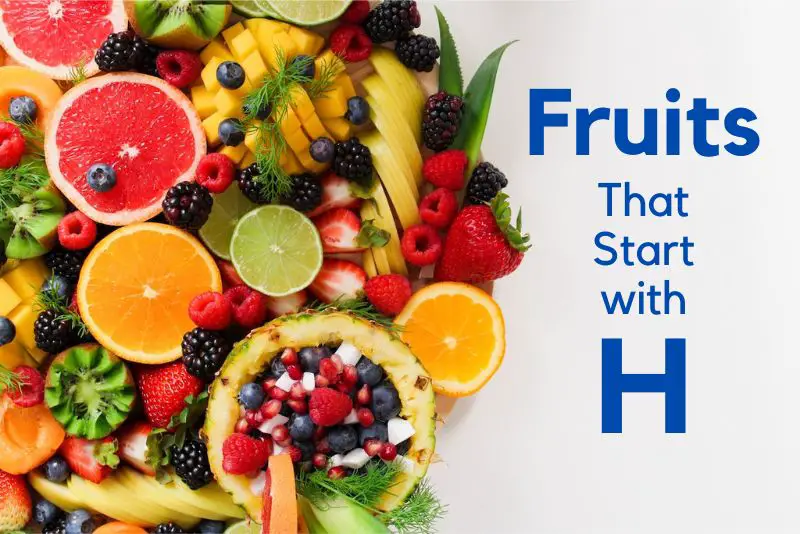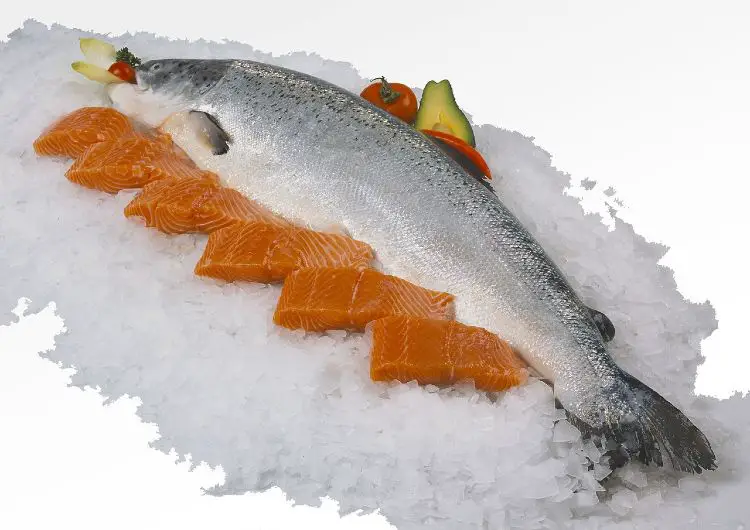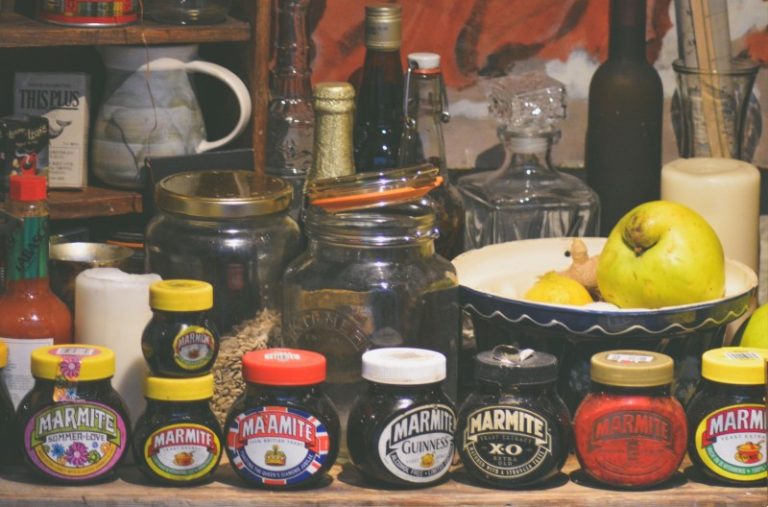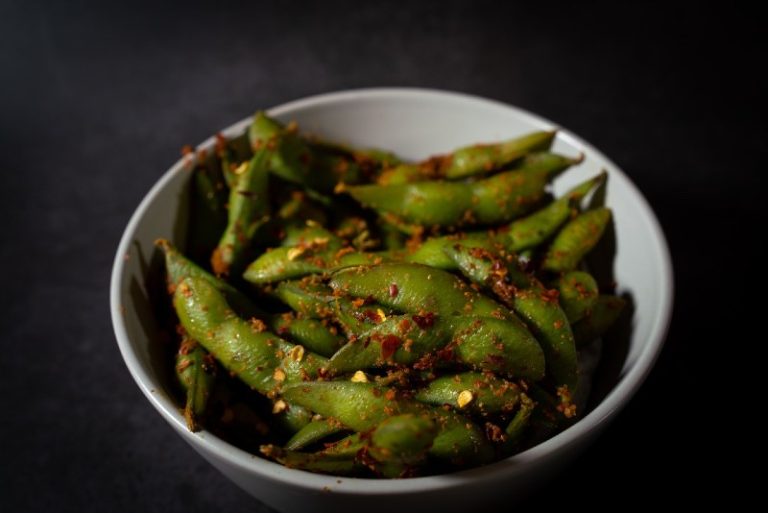Fruits That Start with H (Complete List of 40+ Fruit Names)
Welcome to the world of fruits that start with H! In this collection, we explore a variety of delicious and intriguing fruits that share this common initial.
From tropical delights to lesser-known gems, these fruits offer a range of flavors, textures, and appearances that will pique your curiosity. Get ready to discover the sweet and tangy huckleberry, the exotic huito, the refreshing honeydew melon, and many more.
Whether you’re a fruit enthusiast or simply looking to expand your palate, these fruits beginning with H are sure to captivate and delight your taste buds. Let’s embark on this flavorful journey together!
List of Fruits Starting with H
Hackberry
Hackberry is a small, round fruit that grows on trees. It has a sweet and nutty flavor with a hint of caramel. Hackberries are often used in making jams, jellies, and pies. They are also enjoyed by birds and wildlife. In addition to their unique taste, hackberries are a good source of dietary fiber and antioxidants.
Hairless Rambutan
Hairless rambutan, also known as pulasan, is a tropical fruit with a sweet and juicy flesh. It resembles the more common rambutan but lacks the hairy outer skin. Hairless rambutans are typically eaten fresh and can be found in Southeast Asia. They have a unique combination of sweet and tangy flavors, making them a delightful treat for fruit lovers.
Hala Fruit
Hala fruit, also called pandanus or screw pine fruit, is a tropical fruit found in Pacific Islands. It has a unique appearance with its segmented, cylindrical shape and spiky exterior. The fruit is not typically consumed directly, but its fibrous pulp is used in various dishes and desserts. Hala fruit has a mild, sweet flavor and is often associated with tropical island cuisines.
Hall Crabapple
Hall crabapple is a small fruit that belongs to the apple family. It has a tart and slightly sour taste, making it ideal for making jams, jellies, and preserves. Hall crabapples are often used as a decorative element in gardens due to their attractive appearance. They can vary in color from green to red and are a good source of vitamin C.
Hardy Kiwi
Hardy kiwi, also known as kiwiberry, is a smaller version of the traditional kiwi fruit. It has a smooth, edible skin and a sweet and tangy flavor. Hardy kiwis are often eaten fresh and can be enjoyed as a healthy snack. Unlike regular kiwis, they are bite-sized and do not require peeling. Hardy kiwis are packed with vitamins C and E, as well as dietary fiber.
Hawaiian Mountain Apple
Hawaiian mountain apple, also known as Ohi’a ‘ai, is a tropical fruit found in Hawaii. It has a crisp texture and a mildly sweet flavor. The fruit is typically eaten fresh and can be enjoyed as a refreshing snack. Hawaiian mountain apples are often used in salads or desserts. They are a good source of vitamin C and provide dietary fiber.
Hawaiian Raspberry
Hawaiian raspberry, also called ‘akala, is a unique fruit native to Hawaii. It resembles a traditional raspberry but has a sweeter and less tangy taste. Hawaiian raspberries are often eaten fresh and can be used in various culinary creations, including jams and sauces. They are known for their vibrant red color and juicy texture, making them a delightful treat.
Hawthorn Berry
Hawthorn berry is a small fruit that grows on hawthorn trees. It has a tart and slightly sweet taste. Hawthorn berries are commonly used in making jams, jellies, and herbal teas. They are known for their potential health benefits, such as supporting heart health and digestion. These berries are rich in antioxidants and provide dietary fiber.
Hawthorn Fruit
Hawthorn fruit, also known as haw, refers to the edible part of the hawthorn plant. It has a similar taste to hawthorn berries, with a tart and slightly sweet flavor. Hawthorn fruit is often used in traditional medicine and herbal remedies for its potential health benefits. It can be consumed raw, cooked, or used in various culinary preparations.
Hazelnuts
Hazelnuts, also called filberts, are small nuts with a rich and buttery flavor. They are commonly used in baking, confectionery, and as a topping for desserts. Hazelnuts can also be enjoyed on their own as a nutritious snack. They are a good source of healthy fats, vitamin E, and minerals. Hazelnuts are widely used in both sweet and savory dishes, adding a delightful crunch and flavor.
Hebesu
Hebesu is a citrus fruit native to Japan. It has a small size and a unique tangy flavor. Hebesu is often used in making juices, syrups, and alcoholic beverages. It is known for its high vitamin C content and is believed to have various health benefits. Hebesu is a lesser-known fruit outside of Japan but is treasured for its refreshing taste and potential medicinal properties.
Heirloom Tomato
Heirloom tomatoes are special varieties of tomatoes that have been passed down through generations. They come in different shapes, sizes, and colors, including red, yellow, and purple. Heirloom tomatoes are prized for their exceptional flavor, often described as juicy, sweet, and rich. They are commonly used in salads, sandwiches, and sauces. Heirloom tomatoes add a burst of freshness and vibrant colors to culinary creations.
Herb Paris
Herb Paris, also known as true-lover’s knot or five-stamen tassel, is a small fruit found in Europe and parts of Asia. It has a distinctive appearance with star-shaped leaves and small red berries. Herb Paris is not typically consumed due to its toxicity, but it has been used in traditional medicine for its potential medicinal properties. It holds cultural and symbolic meanings in various folklore and mythology.
Hickory Nut
Hickory nut is a type of nut that comes from hickory trees. It has a rich and buttery flavor, similar to pecans. Hickory nuts are often used in baking, especially in pies and cookies. They can also be enjoyed roasted or added to savory dishes. Hickory nuts are a good source of healthy fats, protein, and dietary fiber.
Highbush Blueberry
Highbush blueberries are a variety of blueberries that grow on tall bushes. They have a sweet and tangy flavor and are often enjoyed fresh or used in various culinary preparations like pies, muffins, and smoothies. Highbush blueberries are rich in antioxidants and vitamins, making them a nutritious choice. They are commonly found in North America and are harvested during the summer months.
Highbush Cranberry
Highbush cranberries, also known as American cranberries, are not true cranberries but resemble them in appearance and taste. They grow on shrubs and have a tart flavor with hints of sweetness. Highbush cranberries are often used in sauces, jellies, and baked goods. They are rich in vitamin C and provide dietary fiber. These berries are commonly found in cooler regions of North America.
Himalayan Bird Cherry
Himalayan bird cherry is a fruit that grows on trees native to the Himalayan region. It has a tart taste and is commonly used in making jams, jellies, and beverages. The fruit is small and dark red in color, resembling cherries. Their trees are also valued for their beautiful blossoms, which add to their aesthetic appeal.
Himalayan Mulberry
Himalayan mulberry, also known as shahtoot, is a fruit that grows on mulberry trees in the Himalayan region. It has a sweet and juicy flavor, similar to blackberries. Himalayan mulberries can be enjoyed fresh or used in desserts, jams, and syrups. They are a good source of vitamins, minerals, and antioxidants. In addition to their delicious taste, the leaves of the mulberry tree are also used to feed silkworms.
Himsagar Mango
Himsagar mango is a popular variety of mango that originated in West Bengal, India. It is known for its exceptional sweetness and rich aroma. Himsagar mangoes have a small to medium size with a golden-yellow skin and fiberless flesh. They are often enjoyed fresh or used in desserts, smoothies, and other culinary creations. Himsagar mangoes are highly sought after during the summer months in India for their delicious flavor.
Hog Plum
Hog plum, also known as ambarella or June plum, is a tropical fruit with a tangy and sweet taste. It is commonly used in chutneys, pickles, and beverages. Hog plums have a green or yellowish skin and a juicy flesh. They are rich in vitamins A and C and provide dietary fiber. Hog plum trees are found in tropical regions and are appreciated for their shade and fruit-bearing capabilities.
Hokkaido Bird Cherry
Hokkaido bird cherry is a small fruit that grows on trees native to Hokkaido, Japan. It has a slightly tart taste and is commonly used in making jams and liqueurs. Hokkaido bird cherries have a dark red color and are rich in antioxidants. The fruit is also enjoyed by birds, contributing to its name. The Hokkaido region is known for its beautiful cherry blossoms, including those of the bird cherry tree.
Holly
Holly is a fruit-bearing plant known for its vibrant red berries and glossy green leaves. The berries are typically consumed by birds, while the leaves are used for decorative purposes, especially during the holiday season. Holly berries are mildly toxic to humans and should not be consumed. However, they add a festive touch to wreaths, garlands, and other seasonal decorations.
Hollyleaf Cherry
Hollyleaf cherry, also known as Islay or Catalina cherry, is a small fruit native to California and Mexico. It has a sweet and slightly tart flavor and can be enjoyed fresh or used in jams, jellies, and baked goods. Hollyleaf cherry trees are valued for their ornamental beauty and their ability to attract birds with their fruit. The leaves of the tree have a distinct holly-like appearance, contributing to its name.
Honeycrisp Apples
Honeycrisp apples are a popular variety known for their crisp texture and sweet, juicy flavor. They have a distinct combination of honey-like sweetness and subtle tartness, making them a favorite among apple lovers. Honeycrisp apples are versatile and can be enjoyed fresh, used in salads, or baked into pies and tarts. They are harvested in the fall and are highly sought after for their exceptional taste and crunch.
Honeydew Melon
Honeydew melon is a refreshing fruit with a pale green flesh and a sweet, mild flavor. It has a high water content, making it hydrating and perfect for hot summer days. Honeydew melons are typically enjoyed fresh, either as a standalone snack or added to fruit salads. They are rich in vitamins C and B6 and provide dietary fiber. The melon’s smooth, juicy texture and subtle sweetness make it a delicious and healthy choice.
Honey Locust / Thorny Locust
Honey locust, also known as thorny locust, is a type of tree that produces elongated pods containing sweet and edible pulp. The pulp has a honey-like taste, hence the name. While the pods can be eaten, they are more commonly used as a sweetener or flavoring agent in various dishes. Honey locust trees are known for their thorny branches and are often planted as ornamental trees or used as windbreaks in landscapes.
Honeyberry
Honeyberries, also known as haskap berries, are small berries that resemble elongated blueberries. They have a unique flavor profile with hints of sweetness and tartness. Honeyberries are rich in antioxidants and vitamins, making them a nutritious choice. They can be enjoyed fresh or used in jams, jellies, and baked goods. Honeyberries are gaining popularity for their delicious taste and health benefits.
Honeysuckles
Honeysuckles are flowering plants that produce fragrant and nectar-filled blossoms. While not technically a fruit, the base of honeysuckle flowers contains a sweet nectar that can be enjoyed by gently pulling the blossom’s stem. Honeysuckle nectar is known for its sweet taste and floral aroma. It is often used in herbal teas, syrups, and candies. The plant’s vibrant flowers and delightful nectar attract hummingbirds and butterflies, adding beauty to gardens and natural settings.
Honeyvine
Honeyvine, also known as honeyvine milkweed or sand vine, is a vine plant that produces clusters of small, fragrant flowers. The flowers attract bees and butterflies with their nectar, which has a sweet taste. While honeyvine is not a fruit, it is worth mentioning for its role in providing nectar for pollinators. The vine’s vigorous growth and attractive flowers make it a unique addition to gardens and natural habitats.
Horned Melon
Horned melon, also known as kiwano or African horned cucumber, is a spiky fruit with a vibrant orange skin and a jelly-like green flesh. It has a tart and slightly sweet flavor, with a hint of cucumber-like freshness. Horned melon is often used as a decorative fruit or added to fruit salads for its unique appearance and texture. It is rich in vitamins A and C and provides dietary fiber. Horned melon’s distinct appearance and exotic taste make it an intriguing fruit to try.
Horse Mango
Horse mango, also known as keri or kairee, is a variety of mango that is native to the Indian subcontinent. It is smaller in size compared to other mango varieties but is known for its strong aroma and rich flavor. Horse mangoes have a sweet and tangy taste, making them a popular choice for making mango chutneys and pickles. They are harvested during the summer months and are highly regarded for their delicious taste and versatility in culinary applications.
Hortulan Plum
Hortulan plum, also known as Prunus hortulana, is a species of plum tree that produces small, sweet plums. These plums are typically deep purple or black in color and have a juicy flesh. Hortulan plums are enjoyed fresh and are also used in making jams, jellies, and desserts. They are known for their intense sweetness and aromatic flavor. Hortulan plum trees are prized for their ornamental value and can add beauty to gardens and landscapes.
Hottentot Fig
Hottentot fig, also known as sour fig or ice plant, is a succulent fruit that grows in arid regions. It has a unique combination of flavors, with a sweet and slightly tangy taste. Hottentot figs are small and have a bright yellow or orange color. They can be enjoyed fresh or used in jams, preserves, and desserts. The fruit is rich in vitamins and minerals and is known for its ability to withstand harsh environmental conditions.
Huckleberry
Huckleberries are small, round berries that grow on shrubs and are native to North America. They have a slightly tart and sweet flavor, similar to blueberries. Huckleberries are often used in pies, jams, and syrups, and they can also be enjoyed fresh. They are highly prized for their antioxidant content and their association with traditional American cuisine. Huckleberry picking is a popular activity in some regions, as the berries grow wild in forests and mountainous areas.
Huito
Huito, also known as jagua, is a fruit that grows in Central and South America. It has a dark blue or black color and a juicy flesh. Huito is traditionally used as a natural dye, with the fruit’s juice yielding a dark pigment that is applied to the skin or used to color fabrics. The fruit has a mild flavor and is occasionally used in culinary preparations, such as desserts and beverages. Huito is also known for its potential medicinal properties and is used in traditional folk remedies.
Husk Tomatoes
Husk tomatoes, also known as ground cherries or cape gooseberries, are small fruits enclosed in papery husks. They have a unique sweet and tart flavor, reminiscent of tropical fruits. Husk tomatoes are enjoyed fresh and are also used in pies, jams, and sauces. They are rich in vitamins A and C and provide dietary fiber. Husk tomatoes are known for their attractive appearance and are often used as garnishes in culinary presentations.
Hydnora africana
Hydnora africana is a parasitic plant native to Southern Africa. It is not a fruit in the traditional sense, but it bears mentioning for its fascinating nature. Hydnora africana grows underground and only emerges during flowering. The flowers are large, fleshy, and foul-smelling, resembling a bizarre alien creature. While not consumed by humans, the flowers attract carrion beetles and dung beetles, which serve as pollinators. This plant has evolved unique adaptations for survival in its harsh arid environment.
Hyuganatsu
Hyuganatsu is a citrus fruit that originates from Japan. It is similar to a grapefruit in appearance but has a distinct flavor profile. The fruit is known for its strong, sweet aroma and tangy taste. Hyuganatsu is typically enjoyed fresh and is often used in making juices and desserts. It is harvested during the winter months and is considered a seasonal delicacy in Japan. Hyuganatsu’s refreshing taste and unique citrus notes make it a sought-after fruit among citrus enthusiasts.
In conclusion, the world of fruits that start with the letter H is a remarkable one, filled with an array of flavors, textures, and colors. From the vibrant huckleberry to the exotic huito fruit, these fruits offer a unique and diverse eating experience.
Whether you prefer the sweetness of a honeycrisp apple or the tropical tang of a hachiya persimmon, there is a fruit starting with “H” to suit every palate. So, next time you’re on the lookout for a new fruit to try, don’t forget to explore the delightful options that this category has to offer.
Happy indulging in the world of fruits that start with “H”!




